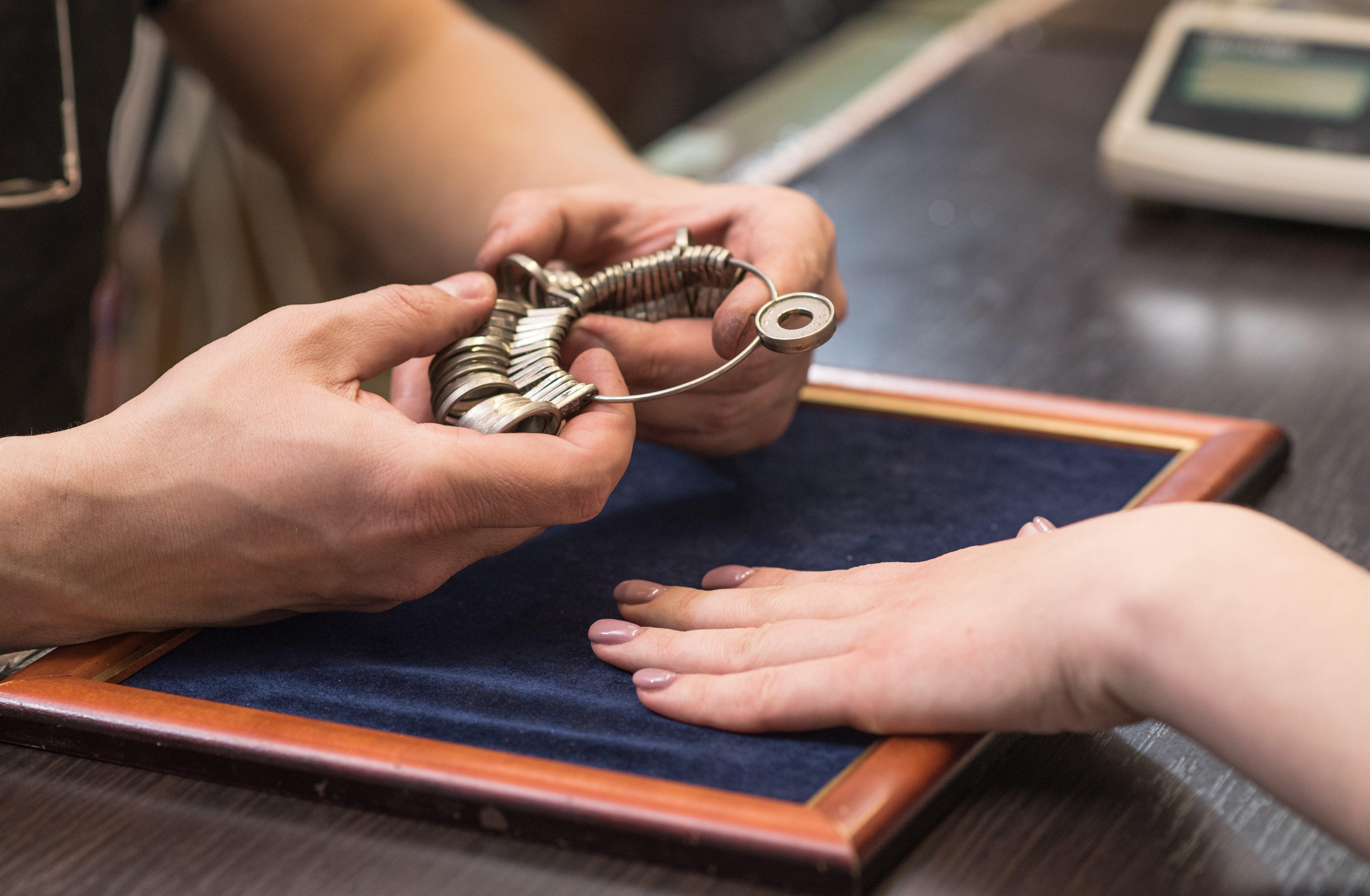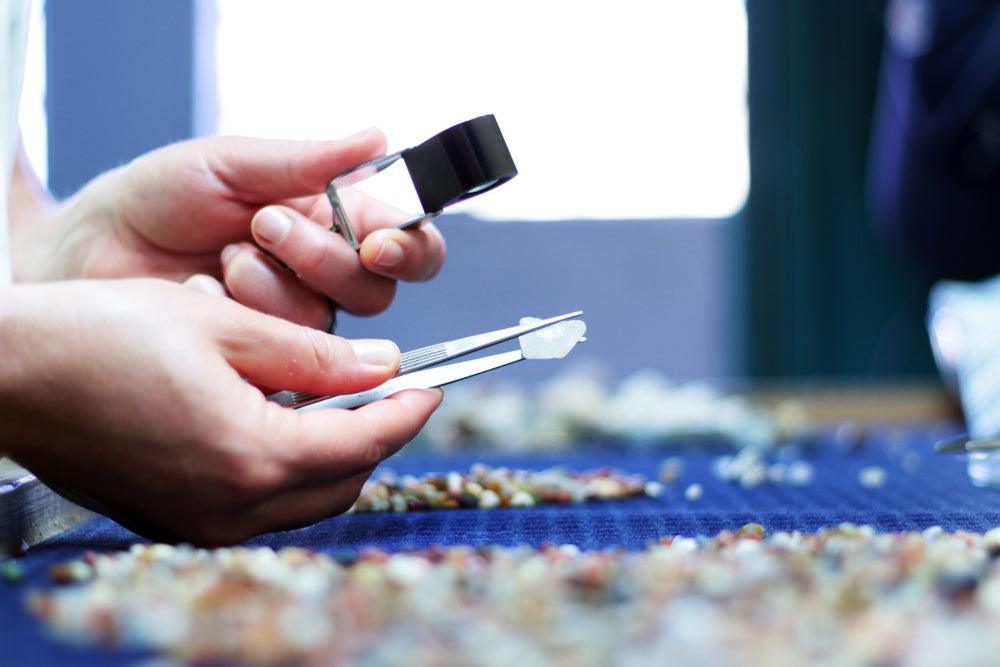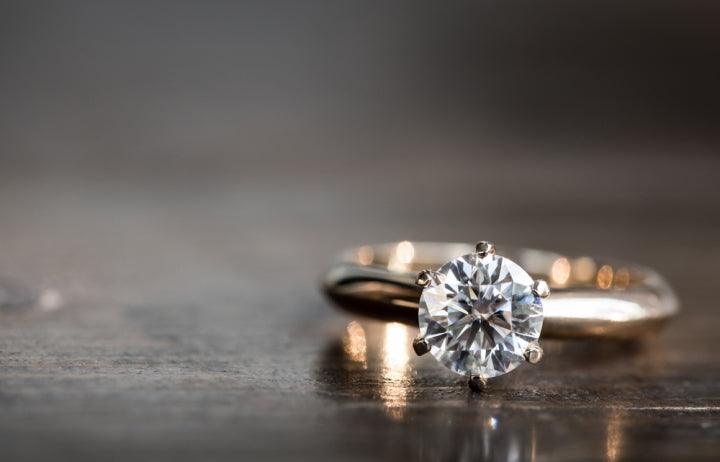
Ring Sizing For That Perfect Fit
Ring size is one of the most important parts of the ring selection process, and often the most overlooked. The wrong ring size might mean you lose your precious ring, or, on the other hand, the circulation in your finger. In this Michael Gabriels article we will go over everything you need to know about figuring out your ring size so that you can enjoy your ring in comfort and peace of mind.
Ring size should never be guessed!
A ring can be one of the most prized pieces of jewelry a person owns. Whether it is a priceless heirloom, or a valuable engagement ring, or simply a favorite, the dread of losing a ring haunts many a wearer. Having the proper band size can alleviate many of those worries.
Whether you are buying a new ring or resizing one you or your partner already own, sizing is tremendously important and can be one of the most complicated parts of the engagement ring process. That being said, hopefully with this article’s help, you (or your partner) will be wearing your ring for many years to come.

Did You Know?
The practice of wearing a wedding ring (and by extension an engagement ring) on the second to last finger of the left hand is based on an ancient belief that a vein or nerve runs from that finger directly to the heart. Learn more about this and the History of Engagement Rings.
Several different factors impact the band size you choose for your ring. So here are some things to remember when choosing a ring size.
FACTORS TO REMEMBER IN RING SIZING:
- You may need a ring size slightly larger or smaller than the exact size of your finger.
- Finger shape can impact ring size. Note if your fingers are tapered or knotted.
- Finger change in size due to many external and internal conditions. Note if your fingers swell during the day or after various activities.
- Band width will impact sizing.
Finger Shape:
There are a lot of hands out there in the world, and one thing we know for certain about all of them is: no two are the same. That’s why we use fingerprinting in criminology. But it goes a lot farther than just the tip. Fingers come in many shapes and sizes and figuring out your ring size means you will have to take a good look at your hand, and understand what kind of finger shape (or shapes) you are dealing with.
Different finger shapes will impact ring size:
Tapered fingers: Where the base of the finger is the widest point, and the finger continues to taper towards the tip. Rings can more easily slide off tapered fingers than knotted, so you’ll want a more snug fit.
Knotted Fingers: Where the widest point in the finger is at the knuckle. The space between knuckles and the base might be more slender, but you’ll need a band large enough to get around the knuckle. If your ring is able to slide over the knuckle, but is slipping around the base of your finger, sizing beads can be used. These detachable accessories fit on the bottom of the band and keep it from slipping around the base of your finger. They are easy to put on and remove, and will not damage your ring or finger.
Band width
Thin bands are normally a looser fit than wide bands which tend to be more snug. This is due to the amount of surface area of the ring that is in contact with the finger. The more surface area, the more friction, the less slip. Simple physics. It's the same reason that racing cars have wider tires. A wider tire has more surface area in contact with the tarmat allowing for more friction, which means more grip, translating to more speed and better steering.
That being said, right now thin rings are immensely popular since they make the center stone pop more and look bigger. So if you want a thin ring, you may want to shave a little off the size you specify for the ring.
International Ring Sizing
In the US and Canada rings are sized on a scale of 3 to 13 with half and quarter sizes as well. The sizes are based upon the measurements of a ring's diameter or circumference in millimeters or inches. A ring's diameter is the dimension of the ring at its widest point on the inside, whereas circumference measures the length of the entire band, from the outside.
Outside the US, sizing may vary considerably. Some countries simply use a different scale still based on millimeters or inches. Australia and the UK use an alphabetical scale for sizes. Make sure you are sizing yourself with the correct scale for that country, and check with the jeweler if you are unsure what they use.
When to size yourself?
Most everyone's fingers change over time, even over a 24 period, so don’t worry too much about that. First of all, rejoice, you’re alive, and body changes are proof of that. Secondly, work around it- take measurements at different times of the day, or after certain circumstances such as when you work out, or when it's very hot or cold. You can get an average that will be the closest to your true ring size.
Warm weather makes fingers swell, while cold weather causes them to shrink.
Some foods can also cause swelling, especially salty foods and hot cocktails.
Strenuous activities also cause fingers to swell, so don’t take your ring size right after that tennis match or long afternoon run.
Fingers also tend to be more swollen in the morning after you wake up, so try measuring later in the day, not right after your morning coffee.
Make sure in the summer you take some extra time to cool off before measuring if you’ve been outside for prolonged periods; likewise, in the winter, don’t measure right after you’ve come out of the cold, or the sauna.
Ring Size Chart
If you want to measure your ring size at home, there are a number of ways to do it easily.
To make it especially easy for you, Michael Gabriels has developed our own sizing guide with three ways to find your ring size.
Before you print out your guide, make sure that your printer’s scaling is properly set. A scale is provided in the guide to make sure that you printed it correctly. Just make sure that the area demarcated “1 Inch” is indeed that measurement.
The first and easiest way to find a ring size is to measure an existing ring that fits your finger well. Measure a well fitting ring you have against the sizes shown to figure out which one is right. If you don’t have a ring that fits well, you can estimate by how off it might be using this guide as well, though we recommend using one of the next options in order to get a more accurate measurement.
Use our cutout sizer to find your ring size:
Included in our ring size guide is a sizer you can cut out that will, when wrapped around your finger, show the best size for you. Keep in mind that our paper sizer is wider than the band you may choose, and adjust accordingly if you are going to choose a thinner or thicker band.
The third way is to wrap a piece of string or paper around your finger and then judge it against the sizing chart on the bottom right hand of the MG sizing guide. The disadvantage of this method is that the string may be too thin, the paper too wide, and so the measurement you gain may not correspond to how the ring you choose will ultimately fit. Take more than one measurement, and if you can, use something approximating the width of the ring you’d like.
Resizing:
It’s pretty normal for a ring to be resized once or twice during its time on your finger. More than that can cause some damage to the metal’s stability.
That being said, life circumstances can alter your ring size.
You may find that the initial size was off and a more loose or snug fit is better for the band you’ve chosen. Many people believe that you can resize a ring down more easily than up, but neither is difficult for an expert jeweler .
Most rings can be resized up or down at least one size, but beyond two sizes may be out of the question since it can undermine the rings integrity. Resizing sometimes adds or detracts metal from the band of the ring, and while this does no apparent damage, many resizing, especially from amateur jewelers, can reduce a rings integrity. It is vitally important, if you are resizing your ring, to do so with the jeweler who made it, or one of great expertise.
Some rings simply cannot be resized, such as eternity rings or rings with a full pave wrap around the band. Because of the diamond placement in these rings, there are often few options besides remaking the band entirely. Certain custom pieces also cannot be resized, if it will destroy the integrity of the unique design.
Ring size as it relates to carat size for center stones
A common misconception is that the ring size dictates the carat size for the center stone of a ring. The truth is that carat size is your personal preference.
What do you want to see when you look at that ring everyday you wear it?
Sizing By A Professional:
All jewelers will have professional sizing rings that you can use to find your size. This tool, often a large keychain with dozens of rings of various sizes, is very accurate, but can vary from jewelry to jeweler slightly. That being said, if you are getting a ring made custom, it is helpful to have the jeweler size you with their own equipment.
You can come in anytime to our office and showroom in Soho, make an appointment for us to accurately size your ring by contacting Support@michaelgabriels.com or messaging us on Instagram @michaelgabrielsny.



